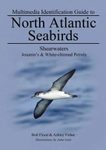Field / Identification Guide Flora / Fauna
By: J Bryan Nelson, John Busby, Andrew Mackay and Bas Teunis
661 pages, 12 col plates, 159 b/w illus, 62 maps
![Pelicans, Cormorants and their Relatives Pelicans, Cormorants and their Relatives]()
Click to have a closer look
About this book
Contents
Customer reviews
Related titles
About this book
One of the jewels in the excellent OUP 'Bird Families of the World' series.
From the publisher's announcement:
The pelecaniformes are a large and important group of seabirds, containing many spectacular species. This book addresses the breeding biology of the six pelecaniform families, which comprise the closely-related core groups (pelicans, cormorants/shags, darters, gannets/boobies) and their more distant relatives, the frigate birds and tropic birds. Many fundamental questions can be addressed through the pelecaniformes: Why do they breed in colonies? What are the links between their feeding methods and their reproduction? What part does territorial and pairing behaviour play in their life-cycles? These and scores of comparable issues, including those related to man, are woven here into a richly interpretative text.
The author's approach to the subject is threefold. First, the pelecaniformes are placed within the framework of four discrete disciplines, with chapters on evolutionary relationships, comparative behaviour, ecology, and the birds' relationship with humans. Secondly, each of the six families is discussed, elucidating the range of taxonomy, behaviour, and ecology within each. Finally, we progress to specific level, using the same structure as for the family accounts. In this way, each of the 60-odd species can be understood not just as discrete units, but as part of their family and order. The book is unique in its coverage of the entire order and in its combination of facts and interpretation.
Pelicans, Cormorants, and their Allies will enable readers not only to identify the many spectacular species which make up this large and important group of seabirds, but also to understand their breeding biology.
Contents
List of colour plates; List of abbreviations; Plan of the book; Introduction; PART I: GENERAL CHAPTERS; 1. Evolutionary relationships; 2. Breeding biology; 3. Behaviour; 4. The pelecaniformes and man; 5. General family accounts; PART II: SPECIES ACCOUNTS; Appendix; Glossary; Bibliography; Index
Customer Reviews
Field / Identification Guide Flora / Fauna
By: J Bryan Nelson, John Busby, Andrew Mackay and Bas Teunis
661 pages, 12 col plates, 159 b/w illus, 62 maps
...marine ornithologists will want to consult it to find out more about a fascinating group of birds...IBIS (2006), 148, 830-843. "the book narrows into the species accounts, which are reference entries packed with details, well complemented by maps and diagrams, and particularly valuable in the way they lead in to a comprehensive listing of the literature." Scottish Birds News ...illustrated to a very high standard. The text is both informative and easy to read as it uses a slightly larger font size than in some handbooks. Jean Torrance, Scottish Bird News The reputation of these guides, as being the scientific bedrock for ornithologists, is well deserved... this will no doubt be part of the ornithological landscape for the next generation. Fatbirder, February 2006.










































